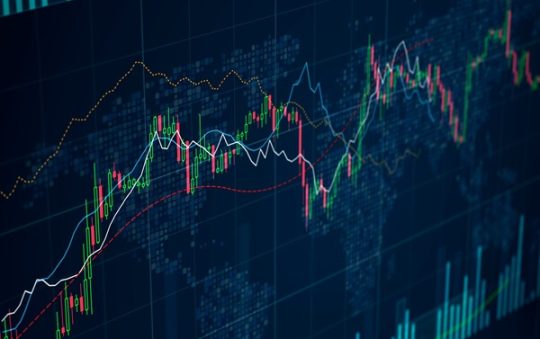The need for Data Science and professionals possessing skills in it is growing rapidly as huge chunks of data is produced by companies every day. To segregate this data, extract the necessary information, and use it to make better decisions, use resources efficiently, and better the performance of the company, this technology is essential. Data Scientists and Analysts are in high demand and they are paid huge salaries as the professionals possessing these skills are not enough to meet the demand.
Before getting into the details of the use of Data Science in the field of banking, let’s briefly discuss what Data Science is.
Contents
What is Data Science?
Data Science, in simple words, is the study of data gained by analyzing a large volume of data sets that are generated by the organization daily. This popular technology infers data and builds respective algorithms to deal with that data using the necessary tools and techniques. Data Science has made its mark across several industries including image recognition, healthcare, gaming, voice recognition, augmented reality, finance, banking, and more. Meanwhile, a Data Scientist is expected to perform Business Analytics in their role as it is important to their goals of Data Science. If you want to master Business Analytics, you can take up Intellipaat’s Master’s in Business Analytics.
This blog on ‘Top 5 Applications of Data Science in Banking’ further discusses 5 of the many significant uses of this technology in the banking sector, so let’s dive right into it.
-
Fraud Detection
Data Science uses Machine Learning to detect and prevent fraud effectively with respect to accounting, credit cards, insurance, etc. It is essential to perform proactive fraud detection in this field in order to provide the required security to the employees and customers by keeping track of their activities and searching for malicious patterns. The faster the fraud can be detected by the respective bank, the sooner the bank can restrict the activities of the account and keep the loss at a minimum. The implementation of several schemes for fraud detection allows the banks to get the desired security, avoiding major losses.
The main procedure followed by banks for fraud detection are as follows:
- Get data samples for preliminary testing
- Estimation of the model
- Perform necessary tests
- Deploy
No data is the same which is why every model requires specific training from Data Scientists. These professionals transform theory into practical use in applications by using their expertise in various techniques of data mining like clustering, association, classification, and forecasting.
-
Customer Data Management
It is the responsibility of banks to collect, store, and analyze a large amount of data of the customers. However, collecting and reading them is not all they can do with it. Instead, they use Data Science and Machine Learning tools that allow professionals to transform the given data into a format that can help them gain more information on their clients, allowing them to explore new revenue opportunities.
In this era, Digital Banking is gaining popularity and becoming used by the majority of people. This has resulted in the creation of zillion bytes of customer data. Here begins the work of a Data Scientist. They need to extract relevant data and use it to understand customer preferences, behaviors, and interactions. Further, Data Scientists open doors to new revenue options for the bank using accurate Machine Learning algorithms and models. To do so, they isolate and process relevant details of the clients, allowing the company to make better decisions.
Also read: HDFC Credit Card Application Status Online
-
Risk Modeling
For investment banks, risk modeling is a high priority as it allows them to regulate their financial activities and helps in pricing financial instruments. The worth of the company is evaluated with investment banking which, in turn, helps in facilitating acquisitions and mergers, generating capital in corporate financing, conducting reorganizations for investment, and more.
This is when risk modeling comes into the picture and plays a significant role for banks and can be best evaluated when there are enough resources like data and Data Science tools. Professionals use Big Data to leverage the latest technologies that will result in effective risk modeling for improved data-based business decisions.
-
Personalized Marketing
The secret to a successful marketing campaign is to come up with customized offers that are specific to the needs of the specific client and result in benefiting them. Using data analytics, data professionals can develop personalized marketing, which targets the right customers for the right products on the right electronic gadget at the right time. They use data mining to target the selections that will allow them to identify potential clients for new services and products.
With the use of the historical, demographical, and behavioral data of purchases, Data Scientists create models that help in predicting the probability of the positive response of the customers to the respective offer. This popular technology allows banks to reach out to their clients and improve rapport with them.
-
Customer Lifetime Value (CLV) Prediction
Customer lifetime value is nothing but the prediction of what the company will derive and benefit from their relationship with the customer. It allows companies to build and sustain their relations with specific clients, creating more profits and higher business growth which is one the many reasons why its significance is growing rapidly.
Often, it is always challenging for banks to gain new profitable clients and retain them and now that the competition is growing stronger than ever, they require a complete view of their customers so that they can make efficient use of their resources for the sole purpose of getting ahead in the game. For this, massive volumes of data need to be considered, like the notions of weakening and acquisition of the client, their utilization of distinct services and products of banking, their profits, along with characteristics like demographic, geographical location, etc.
It is necessary that professionals clean and manipulate this data to make it meaningful and useful. The clients of the bank opt for varied products, services, and profiles in terms of expectations and behaviors. Data Scientists use various tools like classification and regression trees (CART) to create the CLV model, helping in the growth and profitability of the company.
Conclusion
These are merely a few examples of Data Science that are used in the banking sector. Apart from this, Data Science has revolutionized other industries as its demand is only growing. By learning this technology, you will have the opportunity to get into the sector of your dreams and use your skills for the benefit of your company.




